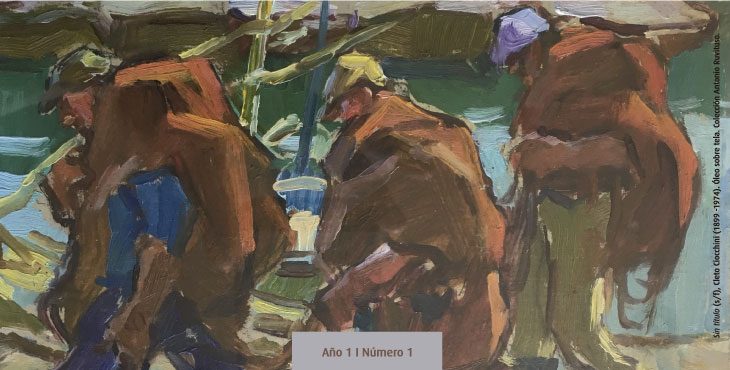José León Pagano and the historic value of art. The case of pre-Hispanic and Colonial art in Argentina
Keywords:
Art, intuition-expression, historical value, national artAbstract
This article analyzes Pagano’s notion of art and, particularly, his concept of national art. Taking into account these definitions, we will inquire into the thinking of our art critic on the artistic manifestations of the pre-Hispanic and Colonial period in our territory. In order to do this, we will address some of his most important texts that condense years of work and reflection on these issues: Motivos de estética [Matters of Aesthetics] (1940), El arte de los argentinos [The Art of Argentinians] ([1937] 1981) and «El templo de San Ignacio» [«The Temple of San Ignacio»] published in 1947 by The National Academy of Fine Arts, which complements our study. They will be analyzed in relation to the philosophical thoughts of Benedetto Croce, which exerted great influence in the aesthetic thought of Pagano.Downloads
Downloads
Published
How to Cite
Issue
Section
License
Current policy since 2019
The acceptance of the manuscript by the magazine means the non-exclusive cession of the property rights of the authors in favour of the editor, who allows the reuse, after publication (post print), under a license Attribution-NonCommercial-ShareAlikes 4.0 International (BY-NC-SA 4.0).
According to these terms, the material can be copied and redistributed by any means or in any format as long as a) the author and original source of the publication are quoted (magazine and URL of the work), access to the license is provided and whether changes have been made is mentioned; and b) the material is not used for commercial purposes.
The cession of non-exclusive rights means that after the publication (post print) in Armiliar the authors can publish their work in any language, means and format; in such cases it must be mentioned that the material was originally published in this magazine. Such cession also means the authorization of the authors for the work to be collected by SEDICI, the institutional archive of the Universidad Nacional de La Plata, and to be spread in the databases that the editorial team considers appropriate to increase the visibility of the publication and its authors.
Moreover, the magazine encourages the authors to deposit their productions in other institutional and thematic archives under the principle that offering the society the scientific and academic production without any restrictions contributes to a greater exchange of the global knowledge.



























